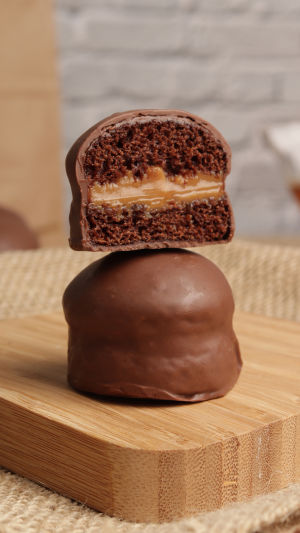German-style gingerbread, or "Lebkuchen," is a delectable confectionary delight that transcends seasonal festivities. Although often associated with festival markets, these aromatic and spiced treats have a rich history and a place in German culinary culture year-round.
Lebkuchen dates back centuries and has evolved into a beloved tradition in Germany and neighboring regions. The term "Lebkuchen" itself derives from "leben" (life) and "kuchen" (cake), signifying its historical significance as a symbol of good luck and prosperity.
Originally, these sweet delights were crafted by medieval monks and nuns, who enriched the simple dough with honey and spices, lending it an exquisite taste and aroma.
At the heart of every Lebkuchen recipe lies a blend of aromatic spices. While variations abound, the core ingredients typically include ground cinnamon, cloves, nutmeg, ginger, and sometimes cardamom. Additionally, Lebkuchen features honey, molasses, almonds, candied fruit, and a hint of citrus zest, all contributing to its distinctive flavor profile.
One of the remarkable aspects of Lebkuchen is its regional diversity. Germany's different states have their own unique recipes and techniques, resulting in various regional styles of gingerbread. Some of the most renowned variations include:
1. Nürnberger Lebkuchen: Hailing from Nuremberg, these Lebkuchen are small, round, and often topped with a sweet glaze. They are celebrated for their intricate designs, typically featuring delicate icing or edible paper decorations.
2. Aachener Printen: Originating in Aachen, these gingerbread treats are known for their chewy texture. They incorporate a special type of syrup, giving them a distinct flavor that sets them apart.
3. Elisenlebkuchen: These are considered the queen of Lebkuchen. Named after Princess Elise of Prussia, they are characterized by their high almond content and minimal use of flour. Elisenlebkuchen is renowned for its superior quality.
4. Pfefferkuchen: Also known as "pepper cake," these Lebkuchen come from the Rhineland and are famous for their robust spiciness. They are often cut into rectangular shapes and may be covered with a thin layer of chocolate.
While Lebkuchen often takes center stage during the holiday season, it's important to note that these delectable treats are enjoyed throughout the year in Germany. Bakeries offer a variety of Lebkuchen styles, allowing locals and tourists alike to indulge in their sweet, spicy goodness year-round.
Creating Lebkuchen is an art form that requires skill and precision. Bakers take great care in rolling, cutting, and decorating these delicacies. The intricate designs, whether created with icing, nuts, or candied fruit, reflect the dedication and craftsmanship that go into each batch.
For visitors to Germany, Lebkuchen is not only a delightful treat but also a cherished souvenir. Gingerbread hearts, adorned with colorful icing and heartfelt messages, are a popular purchase at festivals and markets. They make for both a sweet indulgence and a sentimental keepsake.
In recent years, there has been a surge in creativity when it comes to Lebkuchen. Artisan bakers and pastry chefs are experimenting with new flavors and presentations, blending tradition with innovation. From Lebkuchen-flavored ice cream to Lebkuchen-infused non-cocktails, these beloved treats are finding new and exciting culinary applications.
German-style gingerbread, or Lebkuchen, is a culinary treasure that transcends the boundaries of time and seasons. Rooted in history, these aromatic and spiced delights continue to enchant taste buds with their rich flavors and intricate designs.
Beyond the holiday season, Lebkuchen represents a thriving tradition and a testament to the enduring appeal of this delectable treat. Whether enjoyed in a charming German bakery or savored as a cherished souvenir, the world of Lebkuchen is a delightful journey into sweetness, craftsmanship, and tradition.





